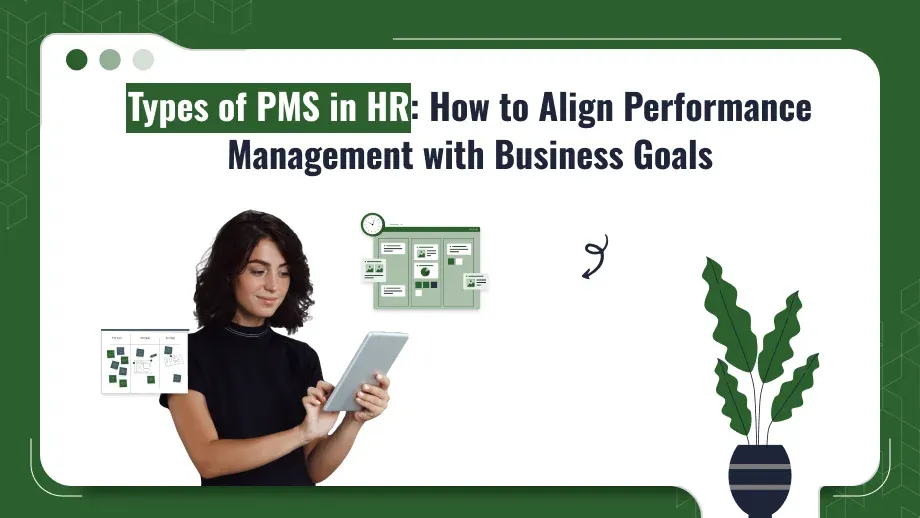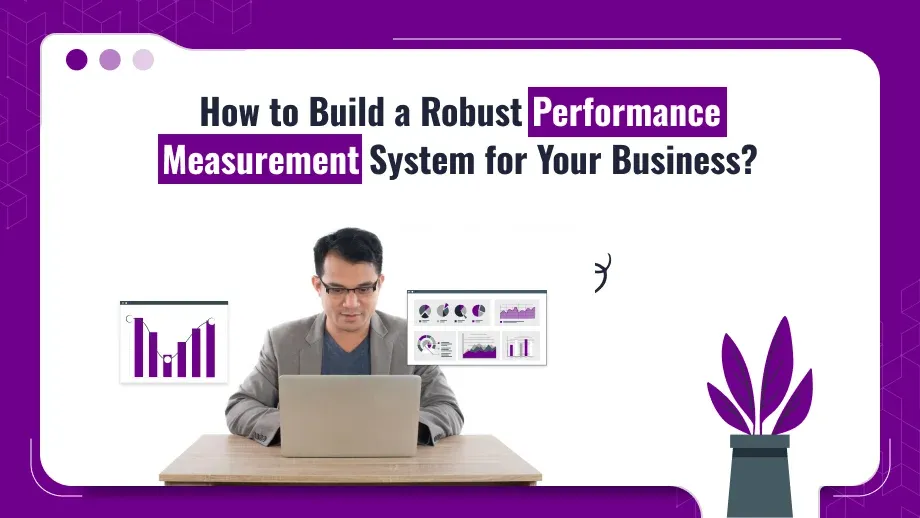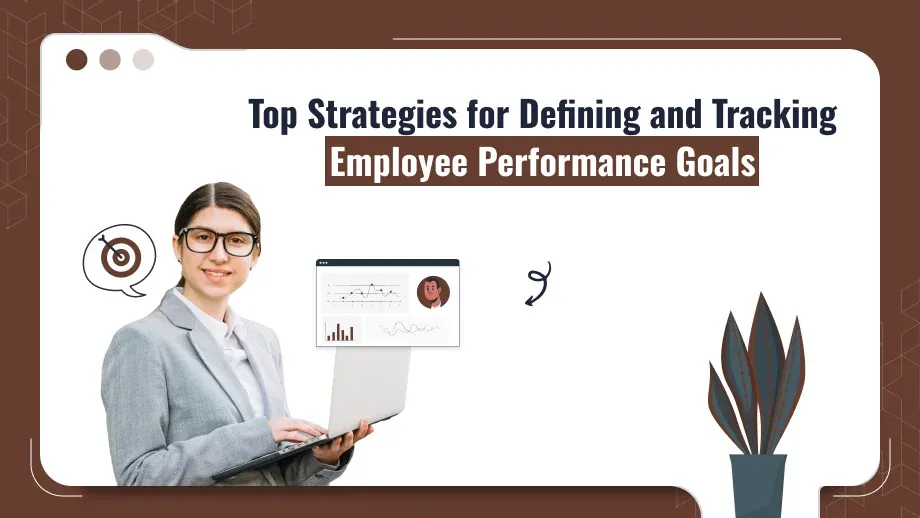
PMS plays a very crucial role in human resource management for any organization. It helps the organizations track, assess, and enhance employee performance. What, however, is PMS? PMS simply means the Performance Management System. Human Resource Performance is a structured approach used by organizations to track and optimize employee performance. Explore the types of PMS in HR and their benefits.. A PMS, however, should be aligned with business goals for it to really work. If the PMS process of HR is aligned to the objectives of the organization, it will not only help the individual perform better, but it will also push the company closer to achieving its long-term strategic vision.
In this blog post, we will explore the process of PMS in HR, the concept of a performance model, the performance management cycle, and see how different types of PMS can be aligned to business goals to increase success for the organization.
What is PMS in HR?
With regard to the types of PMS, it is only proper that we first define what PMS is. In HR terminology, PMS stands for Performance Management System. It is a framework meant to assess and facilitate improvement in performance over time. This system involves setting the performance standards, monitoring, giving feedback, and assessing employees according to the goals and competencies anchored in them.
This would ideally happen within the cycle when done in PMS in HR, that is, goals being set, and regular feedback is provided towards performance and improvement. Sound PMS ensures the effort of working by the employee supports all kinds of organizational strategic goals.
PMS Process in HR: Strategy in Action
The PMS process in HR includes several key steps to ensure that the performance of employees is aligned with business goals. Generally, the following steps are undertaken, and these are usually as follows:
Goal Setting: In this type of PMS in HR, goals are typically set at the start of the cycle for an employee, a team, and departments. These goals directly align with the company’s strategic objectives
Continuous Monitoring and Feedback: The cycle continuously monitors employee performance and guides the employees with regular feedback from the managers towards meeting the set goals. Continuous feedback keeps employees aligned to business priorities .
Performance Evaluation: Employee progress is assessed at the conclusion of the performance cycle in relation to the initial goals. The evaluation is often used in promotion, salary increments, or developmental needs.
Development and Enhancement: Based on the review, employees may be given opportunities for development in order to help them acquire certain skills or competencies that may place them better with organizational objectives.
This systematic method can ensure that the employees in the organization are constantly improving and working towards the company’s success.
Types of PMS in HR: Alignment with Business Objectives
Now that we know what PMS means and the process of PMS within HR, it is now time to walk through various types of PMS and how it correlates with business goals.
1. Traditional Performance Appraisal System
The traditional Performance Appraisal System is amongst the oldest and the most used systems around the globe. The basic design of the traditional appraisal process is the annual or semi-annual review whereby a manager will evaluate his subordinate based on pre-specified goals and competencies.
Traditional appraisals have to be aligned with the business objectives of the organizations. The performance metrics for the appraisal system must capture the key strategic objectives. For example, if improving customer satisfaction is a key objective of the company, the appraisal system should be designed to include metrics capturing how employees contribute to such an objective. Setting goals for employees in appraisals ensures continued alignment with future business objectives.
Enhance your HR strategy with the right Performance Management System.
Explore the types of PMS in HR to drive success!
2. 360-Degree Feedback System
The 360-Degree Feedback System gathers feedback from a variety of sources, including colleagues, superiors, subordinates, and even clients. This method provides a comprehensive picture of an employee’s performance as it considers both their areas of strength and growth from several angles.
Align to the business goals. Since most business goals depend on people’s competencies, you would like to know this criticality in competency feedback: when aligning a system based on 360-degree feedback in your organization with these important goals. As mentioned in an example earlier, let’s say your business focus in this case emphasizes teamwork or a more collaborative kind of service or product provision to target and serve better all different clients.
3. Management by Objectives (MBO)
Organizations may use the OKR, an agile framework, to set ambitious goals and objectives and monitor their progress by identifying key results, which are quantifiable and specified outcomes. Thus, this type is highly result-oriented and is commonly used within a fast-paced business environment. It’s one of the Types of PMS in HR that prioritizes measurable outcomes.
This is why it aligns to business objectives because MBO, as a system by design, is founded upon a mechanism of individual and team goal setting that immediately relates to the strategic priorities of an organization. For example, if the business goal is the expansion into new markets, in MBO, this means sales goals are set according to such an expansion strategy.
4. Objectives and Key Results (OKR)
The OKR is an agile framework by which organizations define ambitious goals-objectives-and then track the progression of those goals through measurable, specific results-key results.
OKRs inherently align the efforts of the employees with business objectives. Because OKRs are constantly updated-often, it’s quarterly-they help an organization be agile and responsive to changing market conditions. In cascading OKRs from the company level to the employees, all the employees’ efforts contribute to strategic success.
5. Continuous Performance Management (CPM)
With CP as its core, CPM emphasizes continuous feedback and even regular check-ins between supervisors and employees. It also focuses on real-time, continual corrections in performance rather than simply waiting for annual reviews.
Under the CPM system, an organization is always on a path aligned with business goals. With performance appraisal made in real-time, appropriate changes in work could easily be done promptly due to changed priorities. For instance, when there is much concentration on launching a new product, through appraisal performance, it can very simply and easily be conveyed with members and then guided in light of what the company at this point requires.
A performance model in HR is a framework of competencies, behaviors, and metrics used to evaluate and improve employee performance. Typically, a performance model would outline those competencies, behaviors, and metrics critical to success in a given role or organization. Types of PMS in HR often employs performance models as a means of measuring the extent to which employees perform in relation to the company’s strategic objectives.
The most common performance models include:
The skills and behaviors of people in a job are the emphasis of competency-based models, and performance may be evaluated from four perspectives: internal processes, learning and growth, customer satisfaction, and financial measures. Employee conduct that deviates from the company’s culture and principles is the foundation of behavioral models.
Using a performance model aligned with business goals will definitely ensure that available workforce is appropriately equipped, right skills and competencies are met to solve the strategic needs for an organization.
Management Performance Cycle: Management performance cycle is the ongoing processes of setting goals, monitoring work done, and evaluating results/outcomes of such work. Improvements are continued to be in line with achieving the objectives of business. Typical steps involved in the cycle include the following:
Setting goals: The setting of the individual, team, and departmental goals in terms of the strategic objectives of the company.
Continuous Monitoring: The monitoring of the employees’ progress and giving feedback on whether or not the set goals are achieved.
Evaluation: Whether the employees have met their set goals and how their performance has contributed to the business’s success.
Improvement and Development: Providing development opportunities, focusing on closing performance gaps and preparing the employees for future challenges.
Through types of PMS in HR, an organization will always be in line with the changing goals of the company, hence remaining on course for continuous success.
Best Practices for Alignment of PMS with Business Goals
In order to have the right alignment of performance management with business objectives, there are several best practices organizations can consider.
Clear Communication of Goals: Business goals should be clearly communicated and frequently communicated to each employee. This helps the employees understand how their work contributes to the success of the organization.
Regular Feedback: Provide ongoing feedback through systems like CPM or OKRs to align the employee’s efforts with the current priorities of the business.
Link Performance to Incentives: Reward based on contribution toward strategic targets. This can be in bonus, promotion, or programs of recognition that reward in terms of alignment of staff performance with business objectives
Flexibility: Your PMS should be flexible, allowing changes in business direction. Explore the Types of PMS in HR, as continuous monitoring and review systems like CPM are brilliant for maintaining alignment in frenetic environments.
Conclusion
Understanding types of PMS in HR actually means and how to make the PMS process properly implemented in HR is the key in driving employee performance and therefore business success. The company will be able to leverage the management performance cycle together with performance models in perfect alignment with business goals as each employee’s effort impacts the strategic objectives of the company.
From traditional performance appraisals to modern, agile systems like OKRs and CPM, aligning performance management with business goals types of PMS in HR from a routine HR task into a strategic tool that propels the organization toward long-term success. In the end, effective performance management not only enhances employee performance but also positions the organization for sustained growth and competitiveness in the market.







